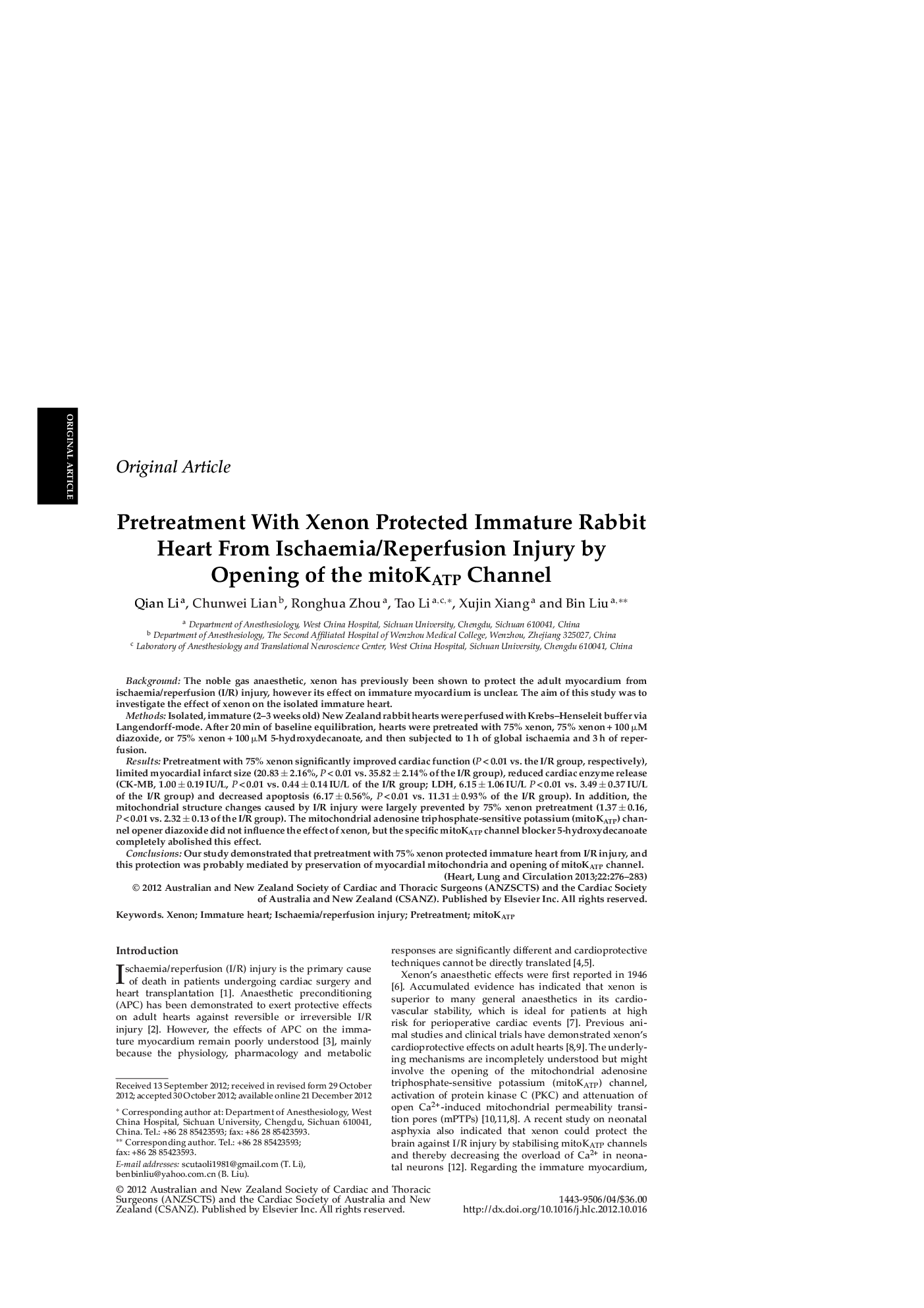| Article ID | Journal | Published Year | Pages | File Type |
|---|---|---|---|---|
| 2917991 | Heart, Lung and Circulation | 2013 | 8 Pages |
BackgroundThe noble gas anaesthetic, xenon has previously been shown to protect the adult myocardium from ischaemia/reperfusion (I/R) injury, however its effect on immature myocardium is unclear. The aim of this study was to investigate the effect of xenon on the isolated immature heart.MethodsIsolated, immature (2–3 weeks old) New Zealand rabbit hearts were perfused with Krebs–Henseleit buffer via Langendorff-mode. After 20 min of baseline equilibration, hearts were pretreated with 75% xenon, 75% xenon + 100 μM diazoxide, or 75% xenon + 100 μM 5-hydroxydecanoate, and then subjected to 1 h of global ischaemia and 3 h of reperfusion.ResultsPretreatment with 75% xenon significantly improved cardiac function (P < 0.01 vs. the I/R group, respectively), limited myocardial infarct size (20.83 ± 2.16%, P < 0.01 vs. 35.82 ± 2.14% of the I/R group), reduced cardiac enzyme release (CK-MB, 1.00 ± 0.19 IU/L, P < 0.01 vs. 0.44 ± 0.14 IU/L of the I/R group; LDH, 6.15 ± 1.06 IU/L P < 0.01 vs. 3.49 ± 0.37 IU/L of the I/R group) and decreased apoptosis (6.17 ± 0.56%, P < 0.01 vs. 11.31 ± 0.93% of the I/R group). In addition, the mitochondrial structure changes caused by I/R injury were largely prevented by 75% xenon pretreatment (1.37 ± 0.16, P < 0.01 vs. 2.32 ± 0.13 of the I/R group). The mitochondrial adenosine triphosphate-sensitive potassium (mitoKATP) channel opener diazoxide did not influence the effect of xenon, but the specific mitoKATP channel blocker 5-hydroxydecanoate completely abolished this effect.ConclusionsOur study demonstrated that pretreatment with 75% xenon protected immature heart from I/R injury, and this protection was probably mediated by preservation of myocardial mitochondria and opening of mitoKATP channel.
